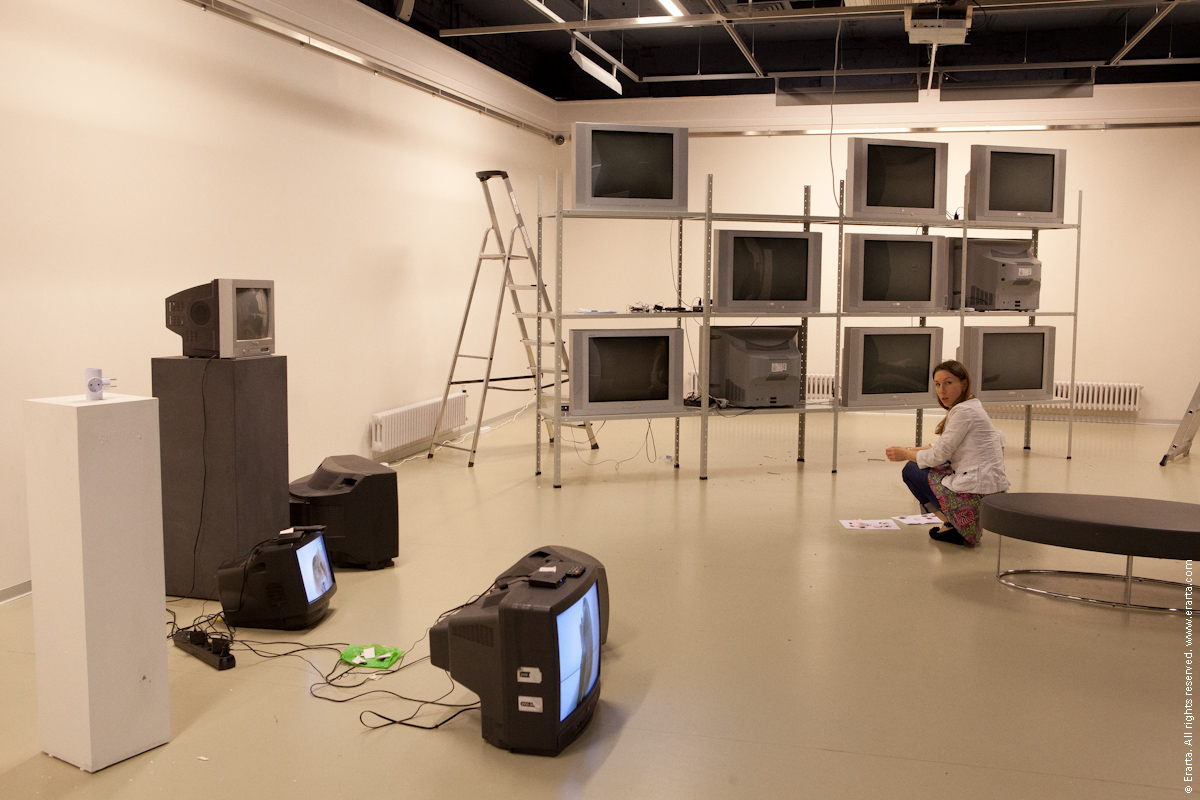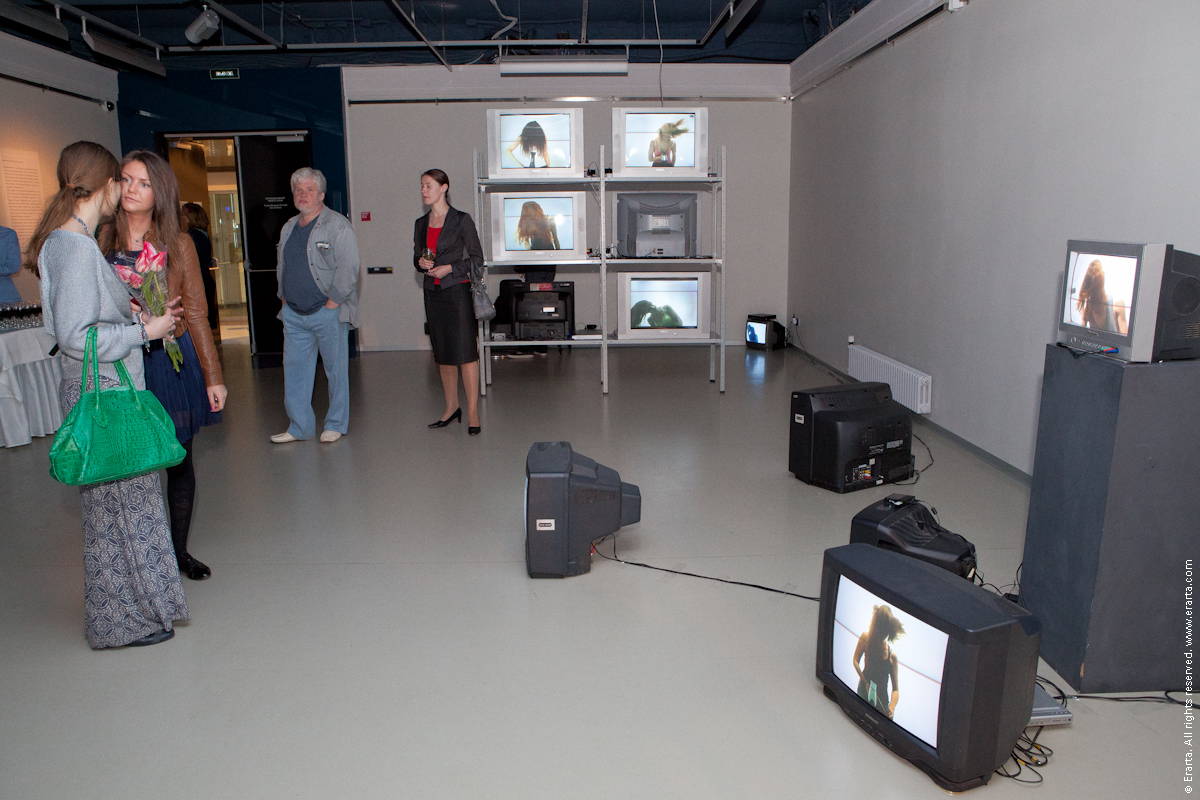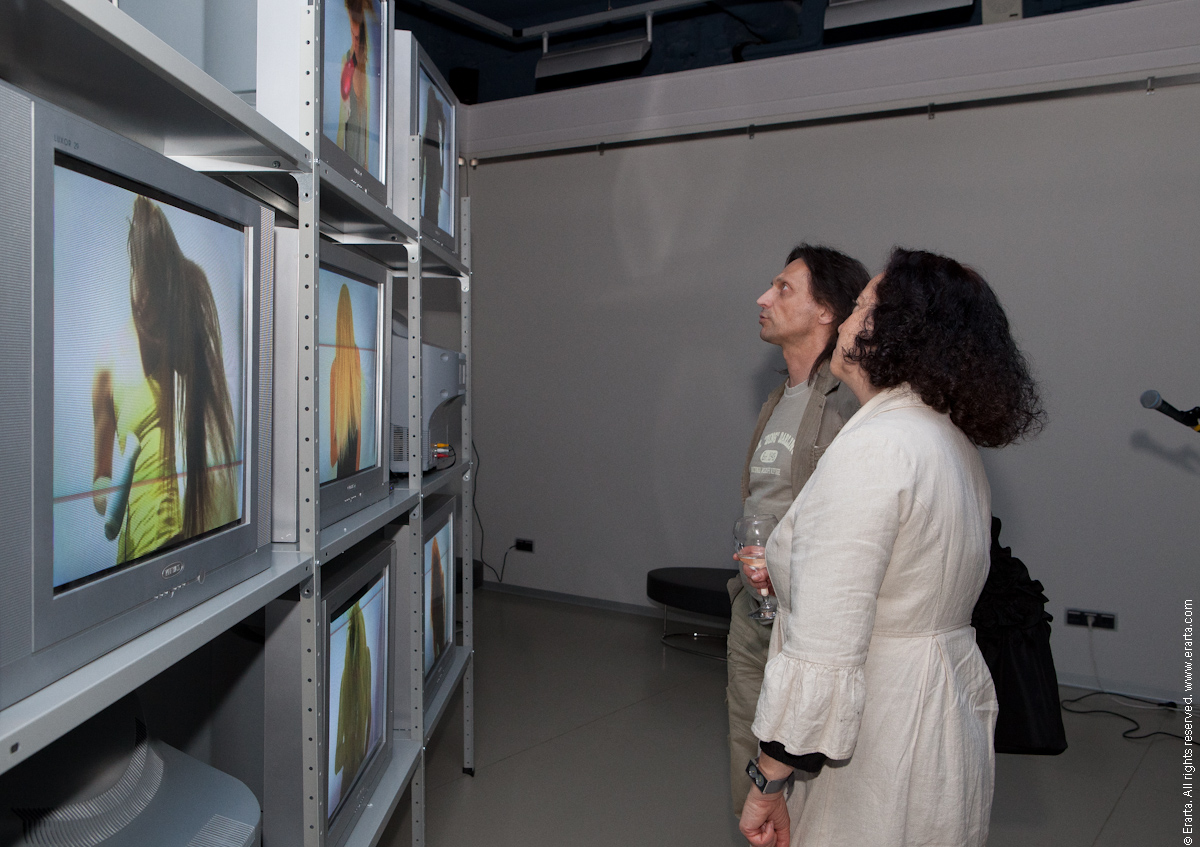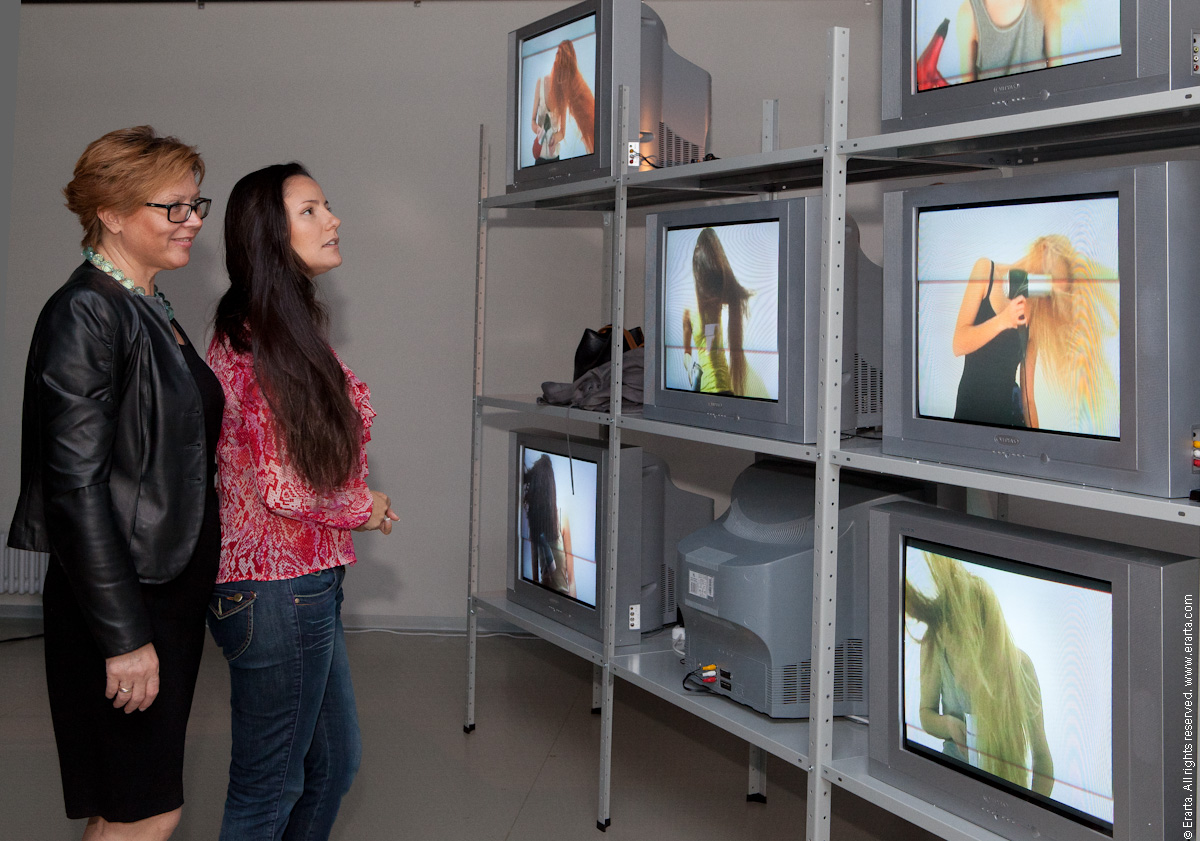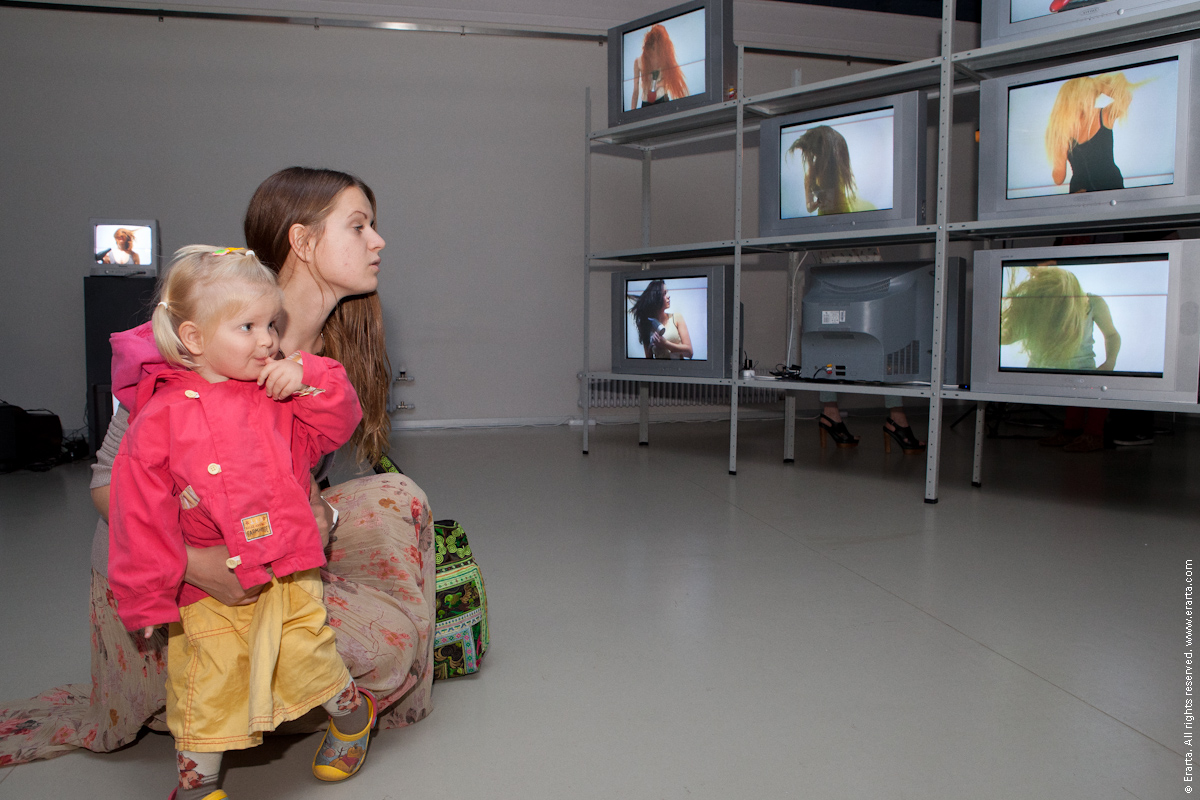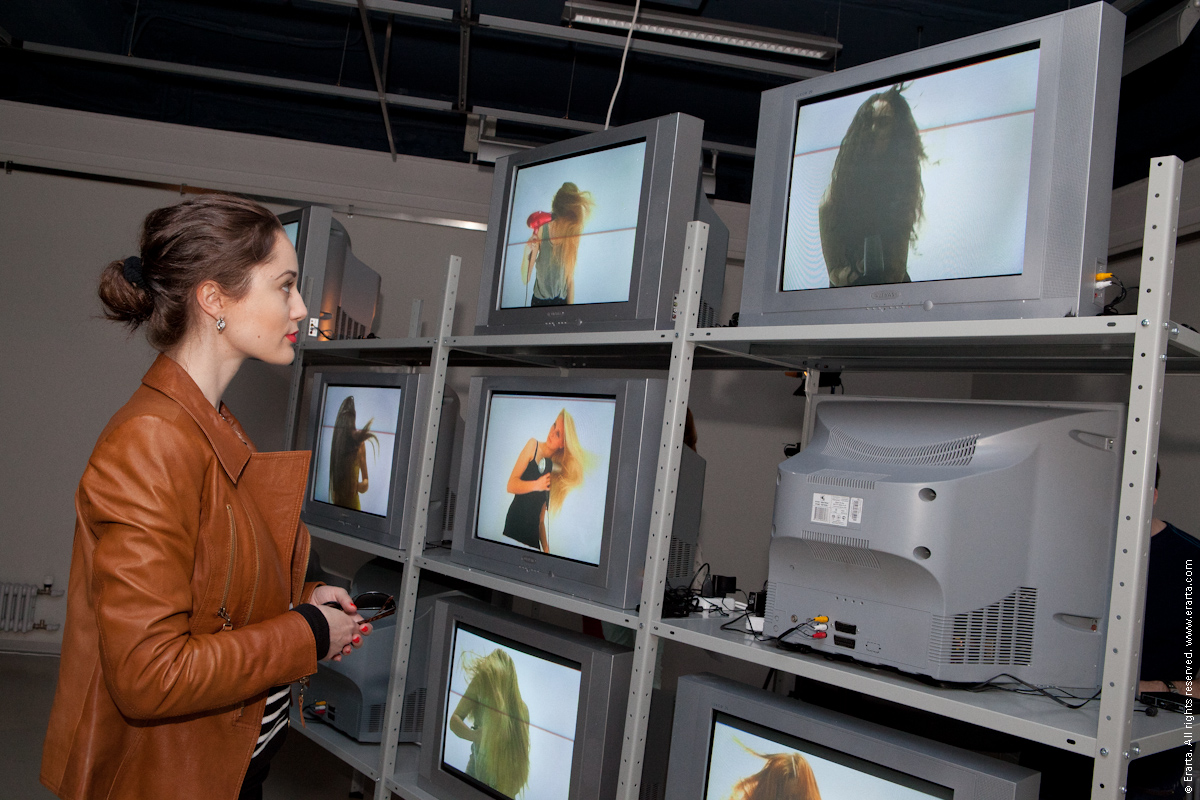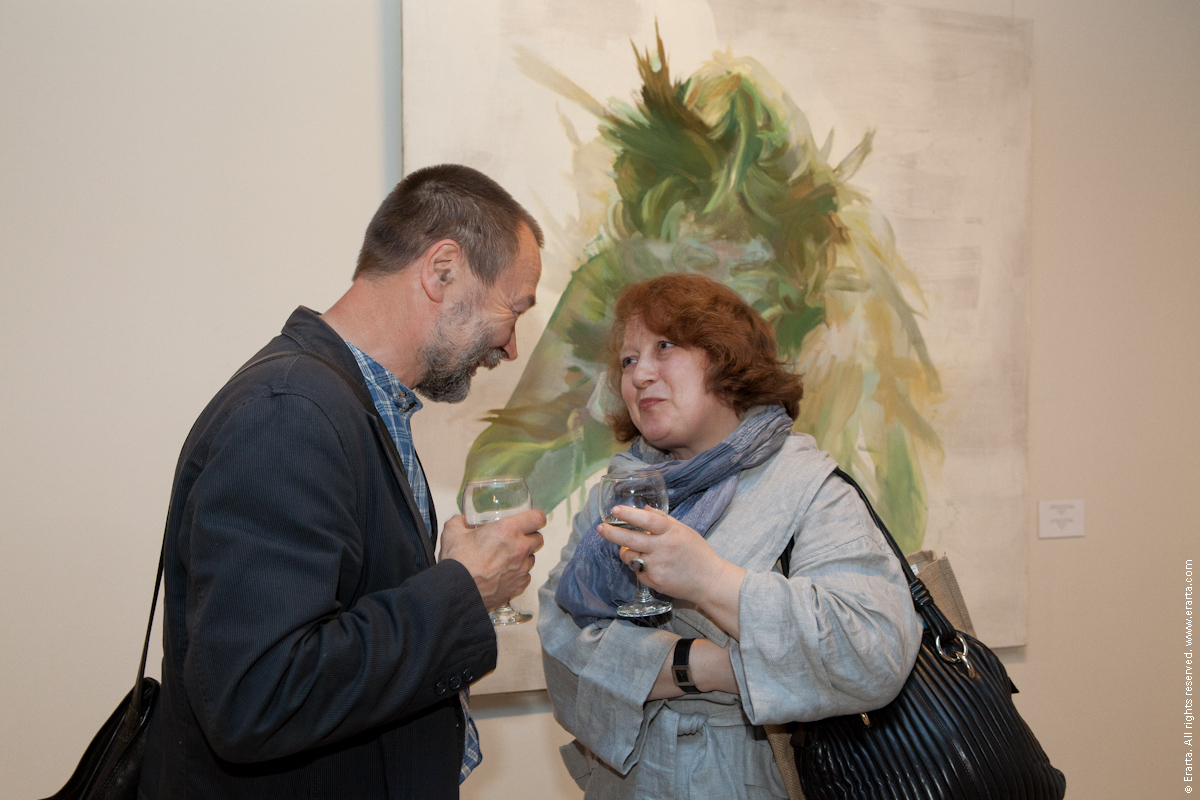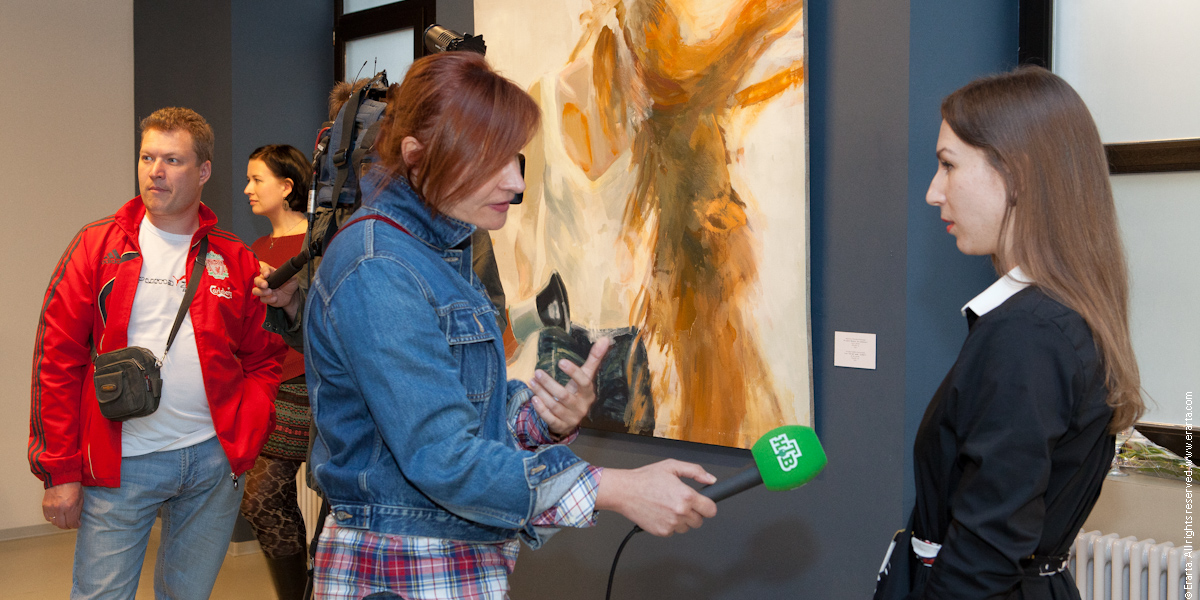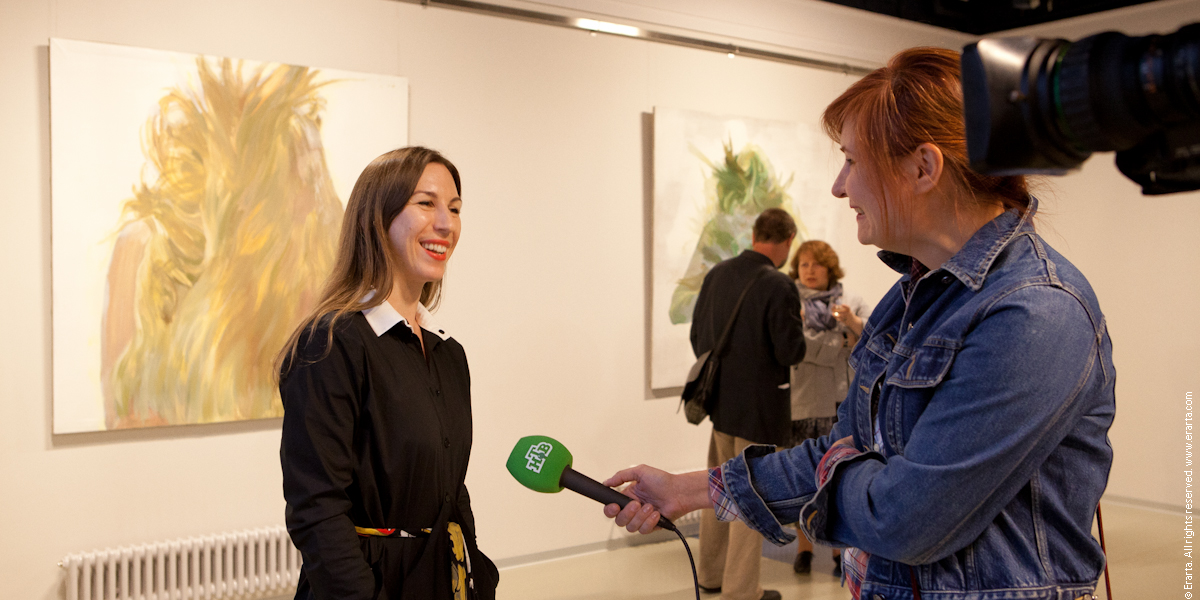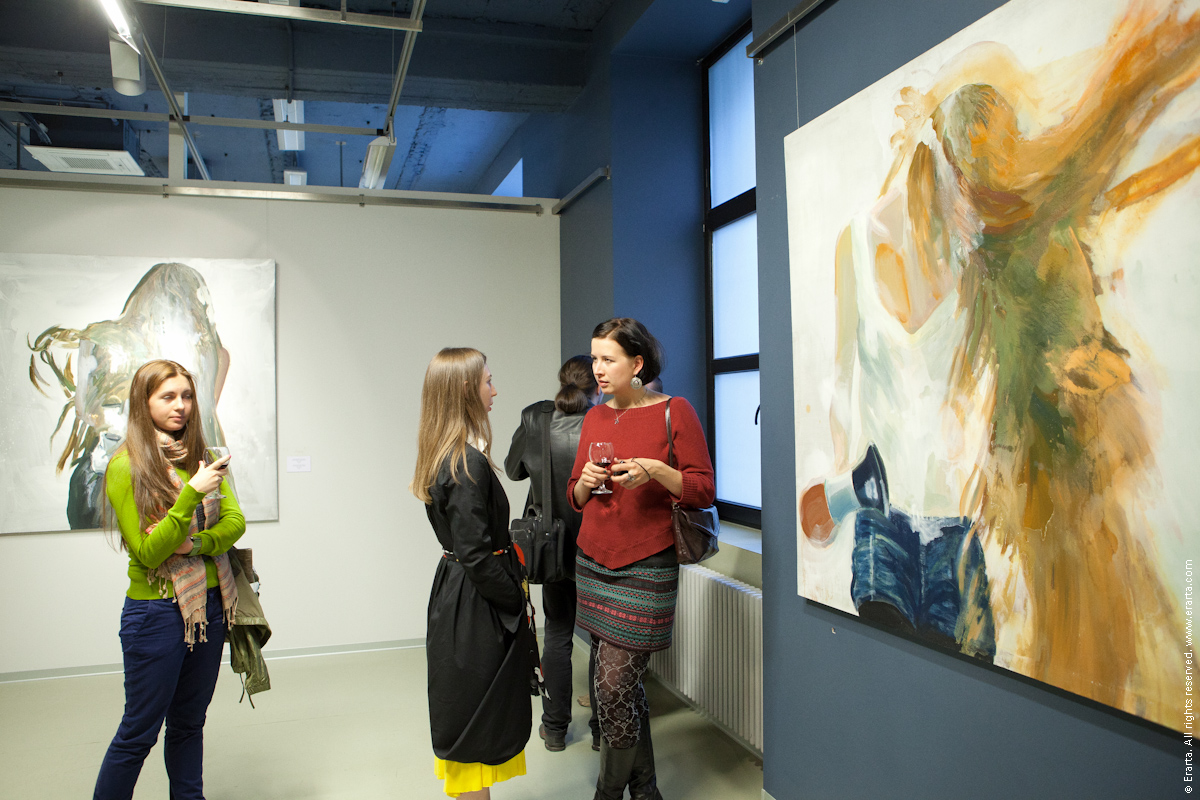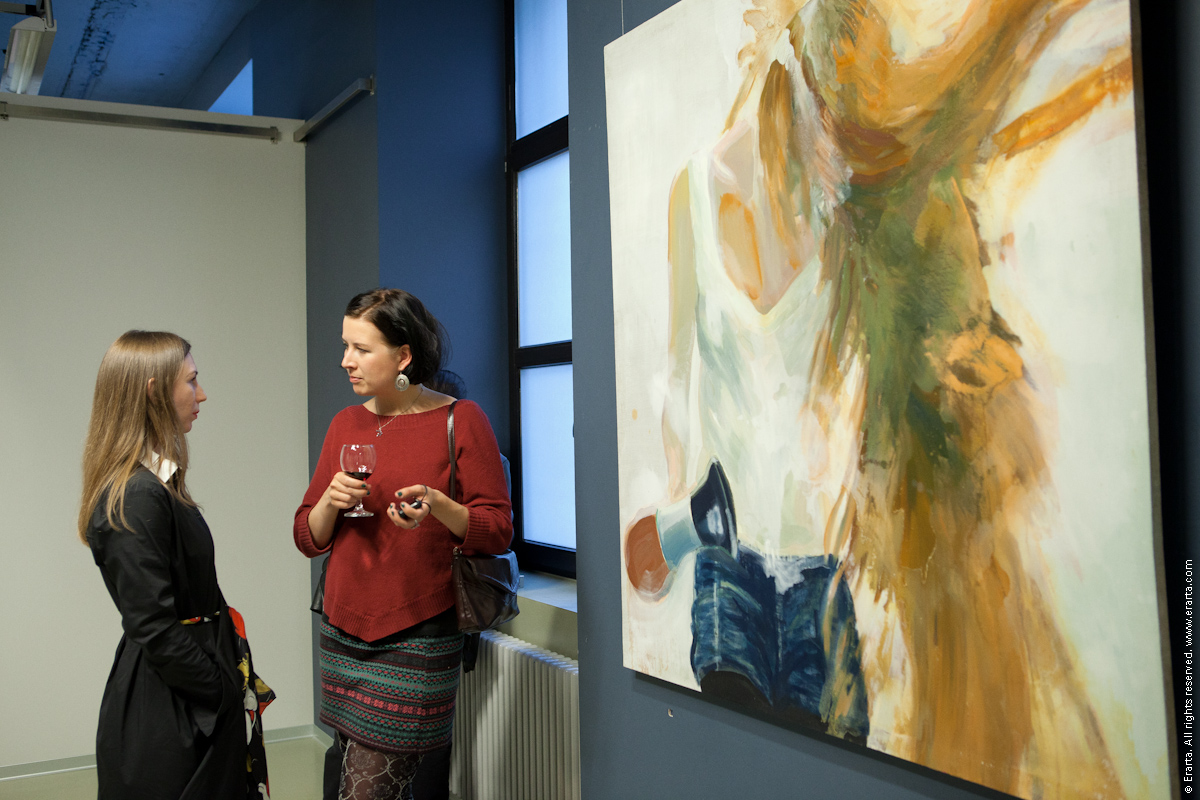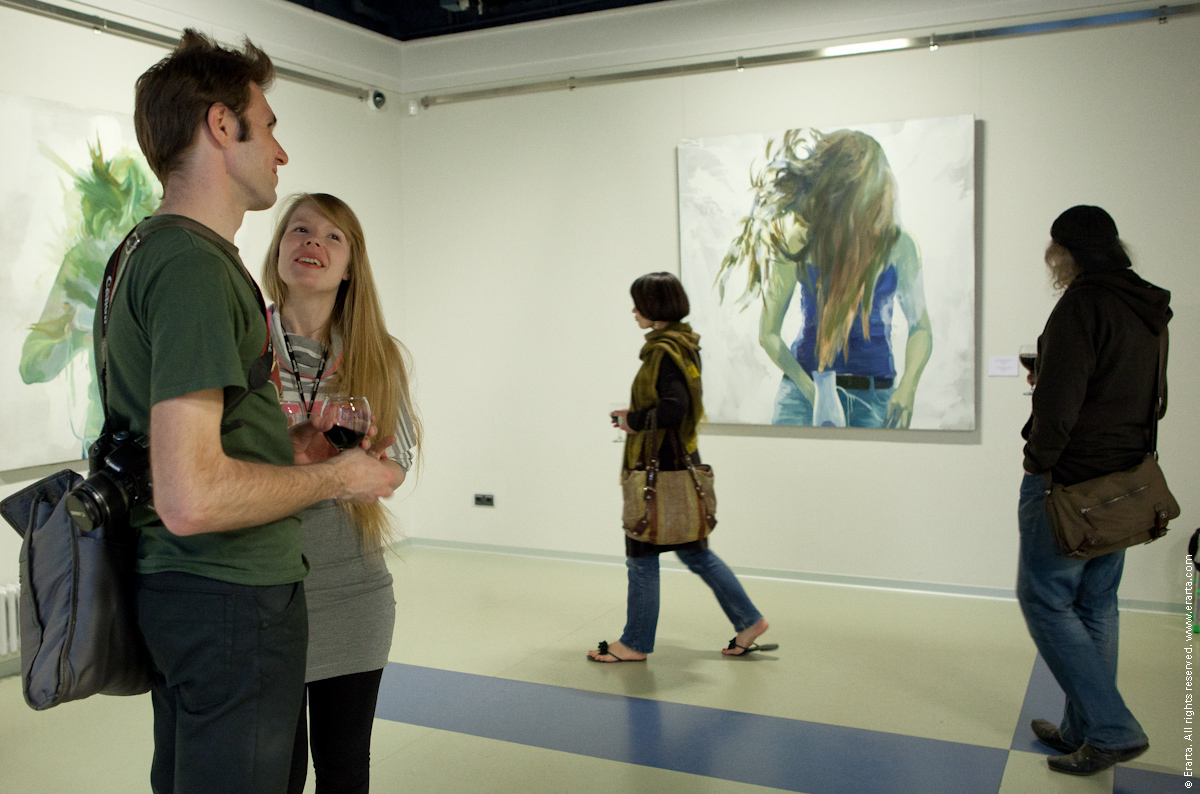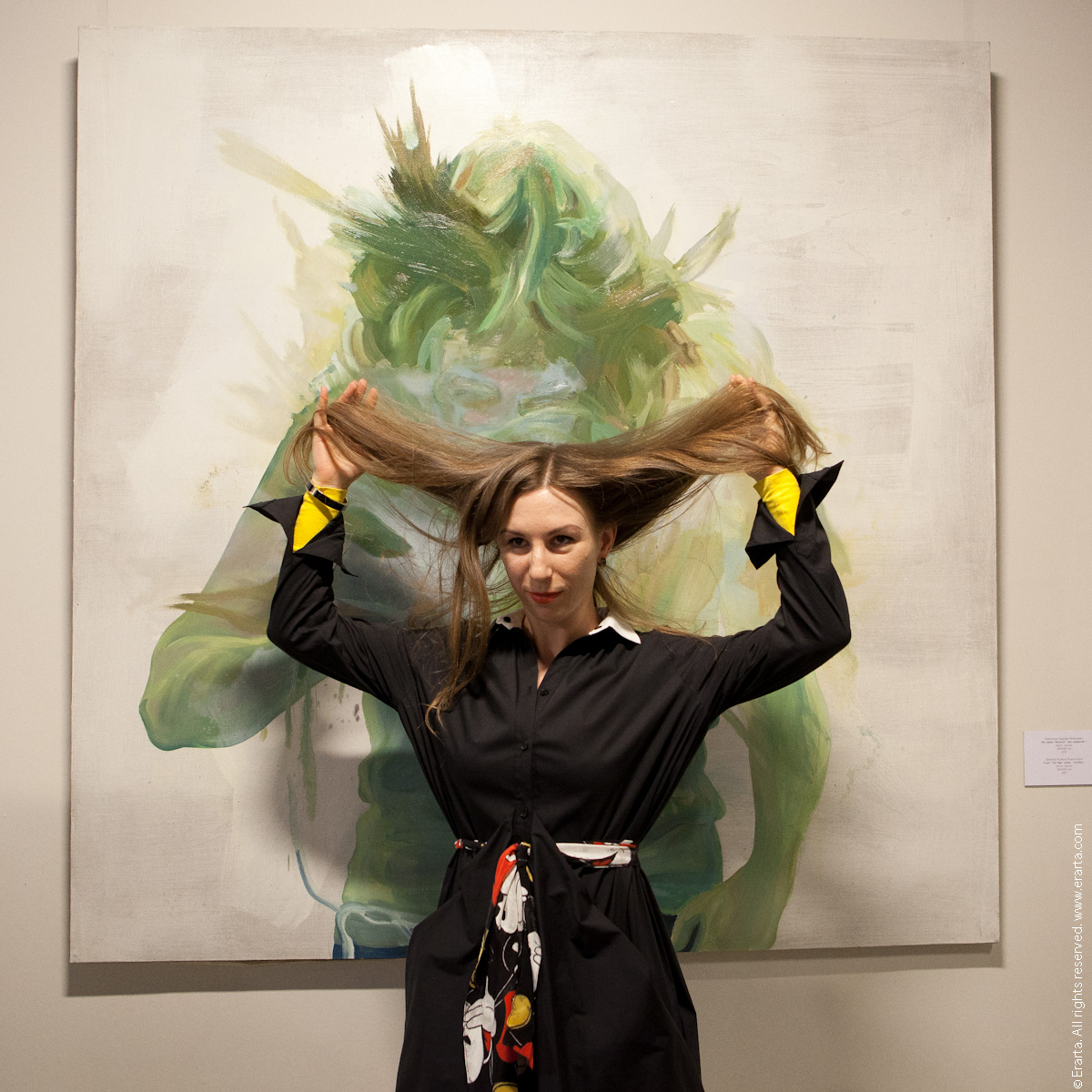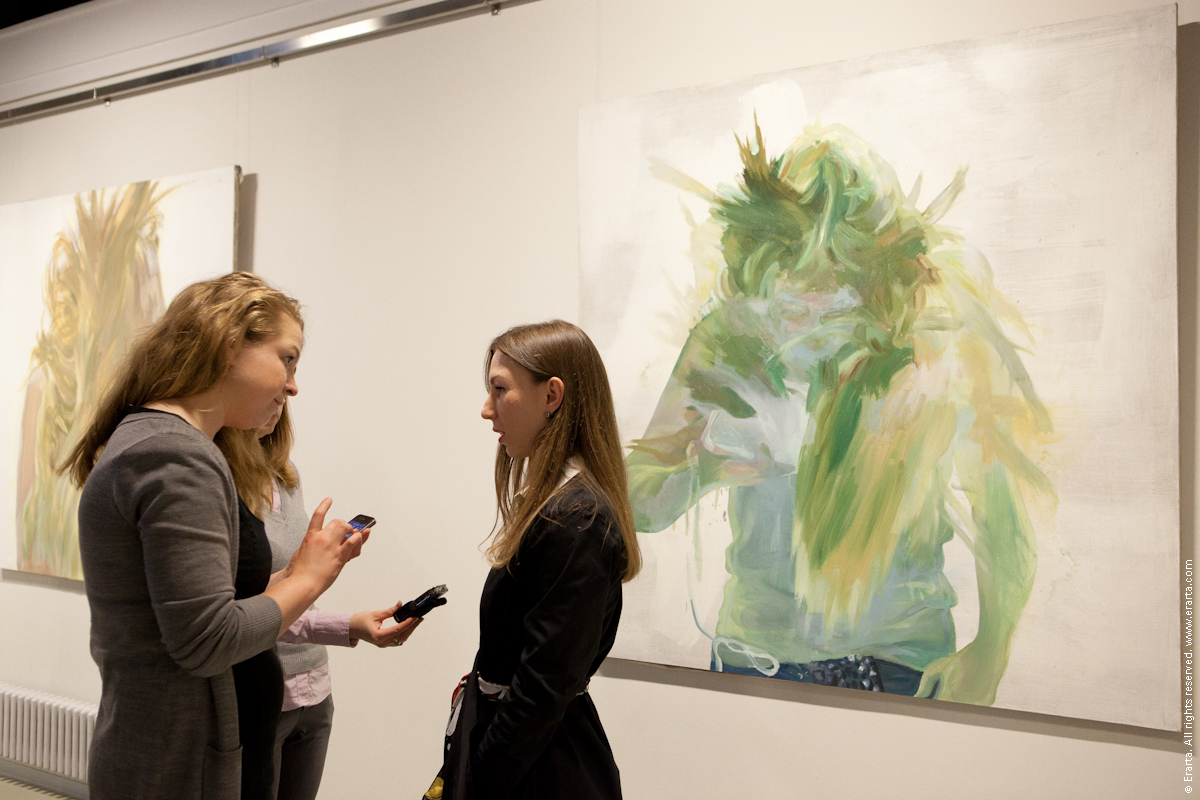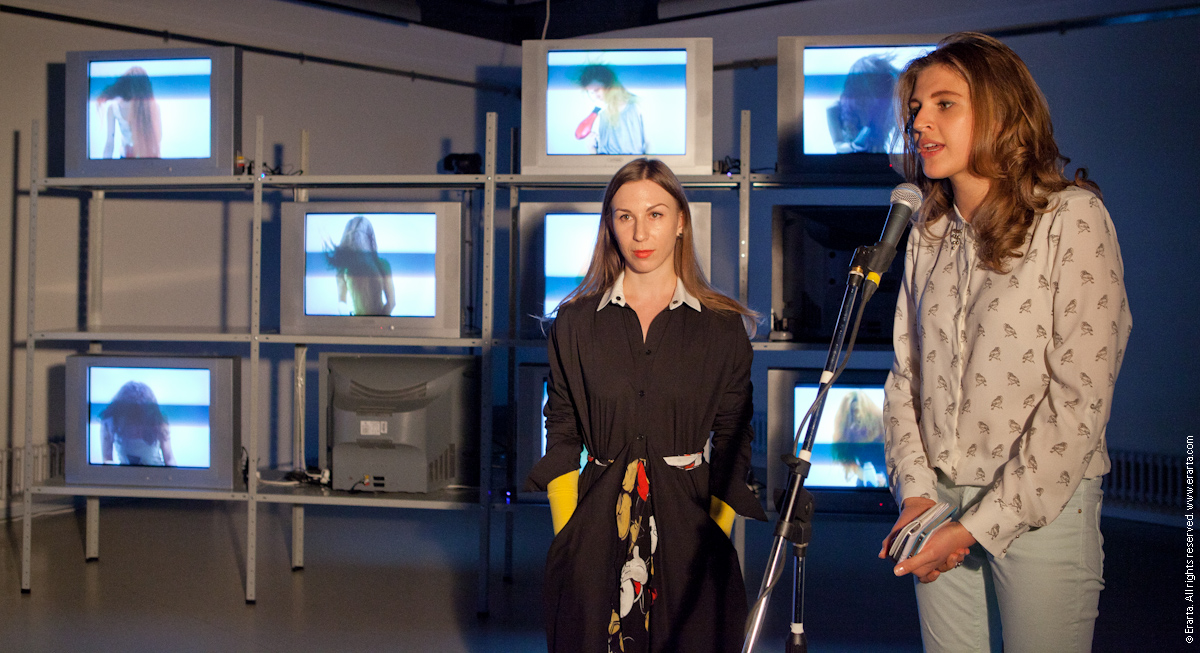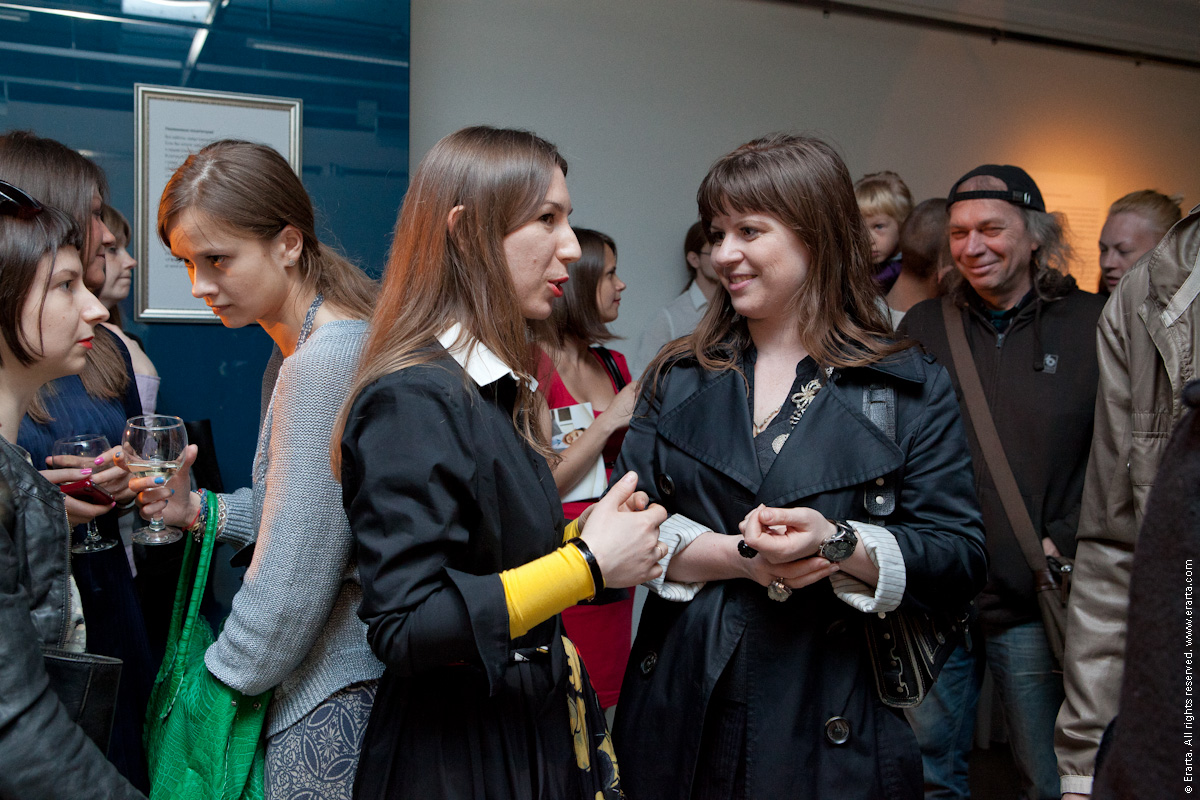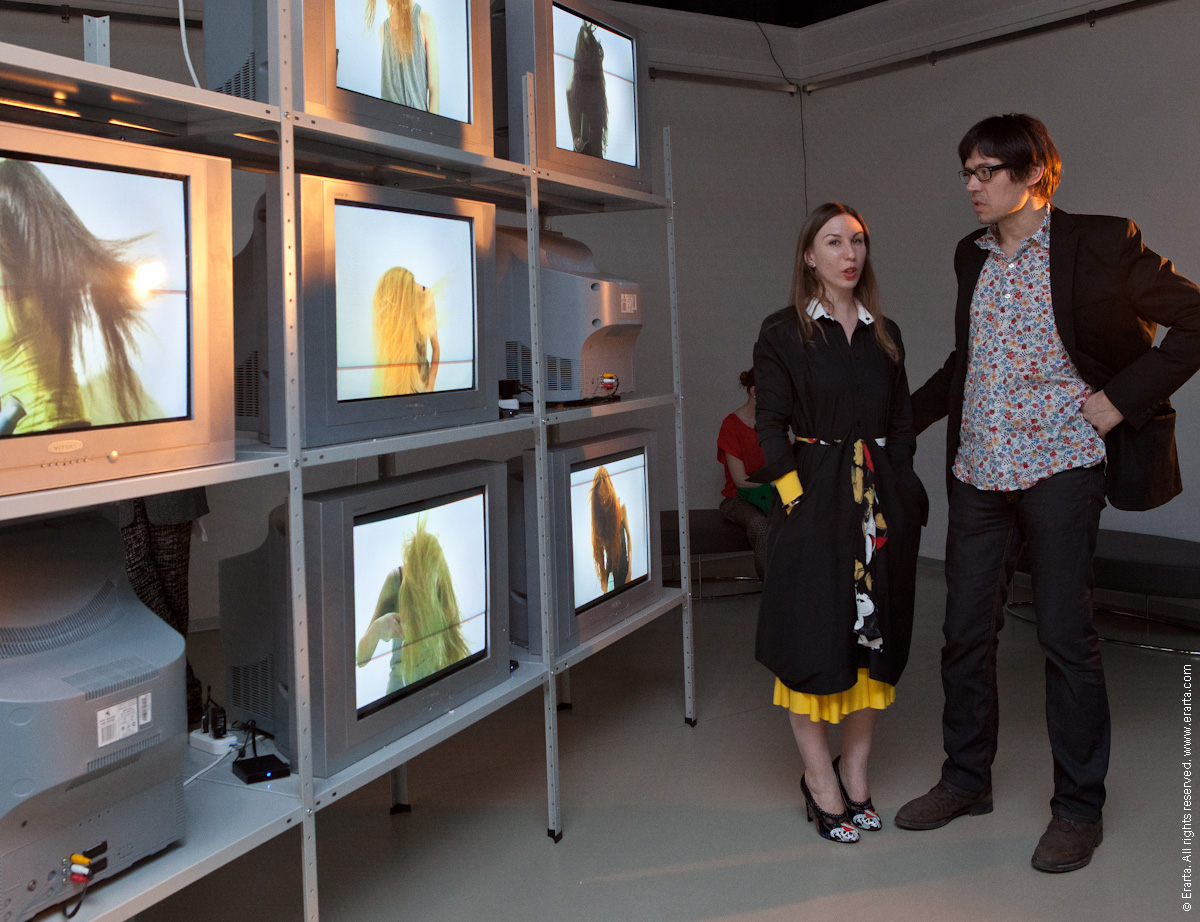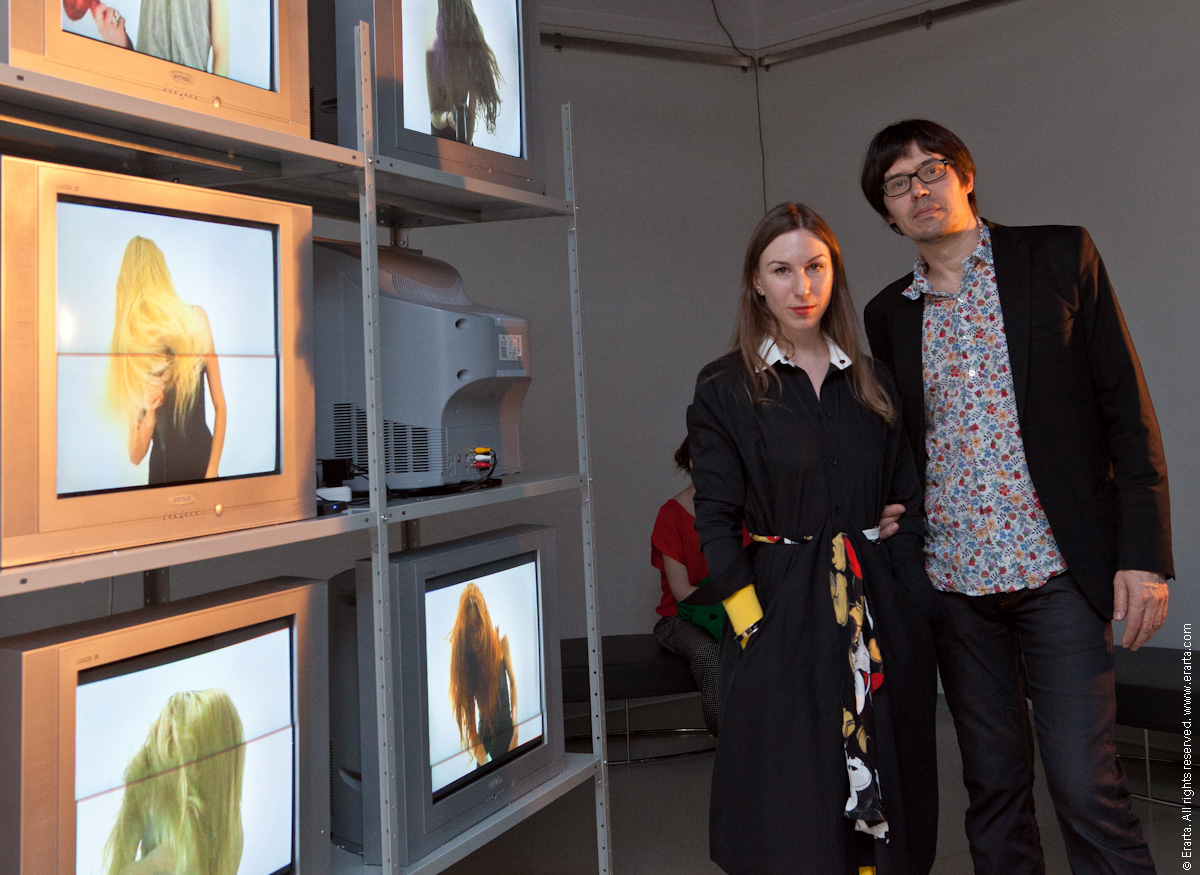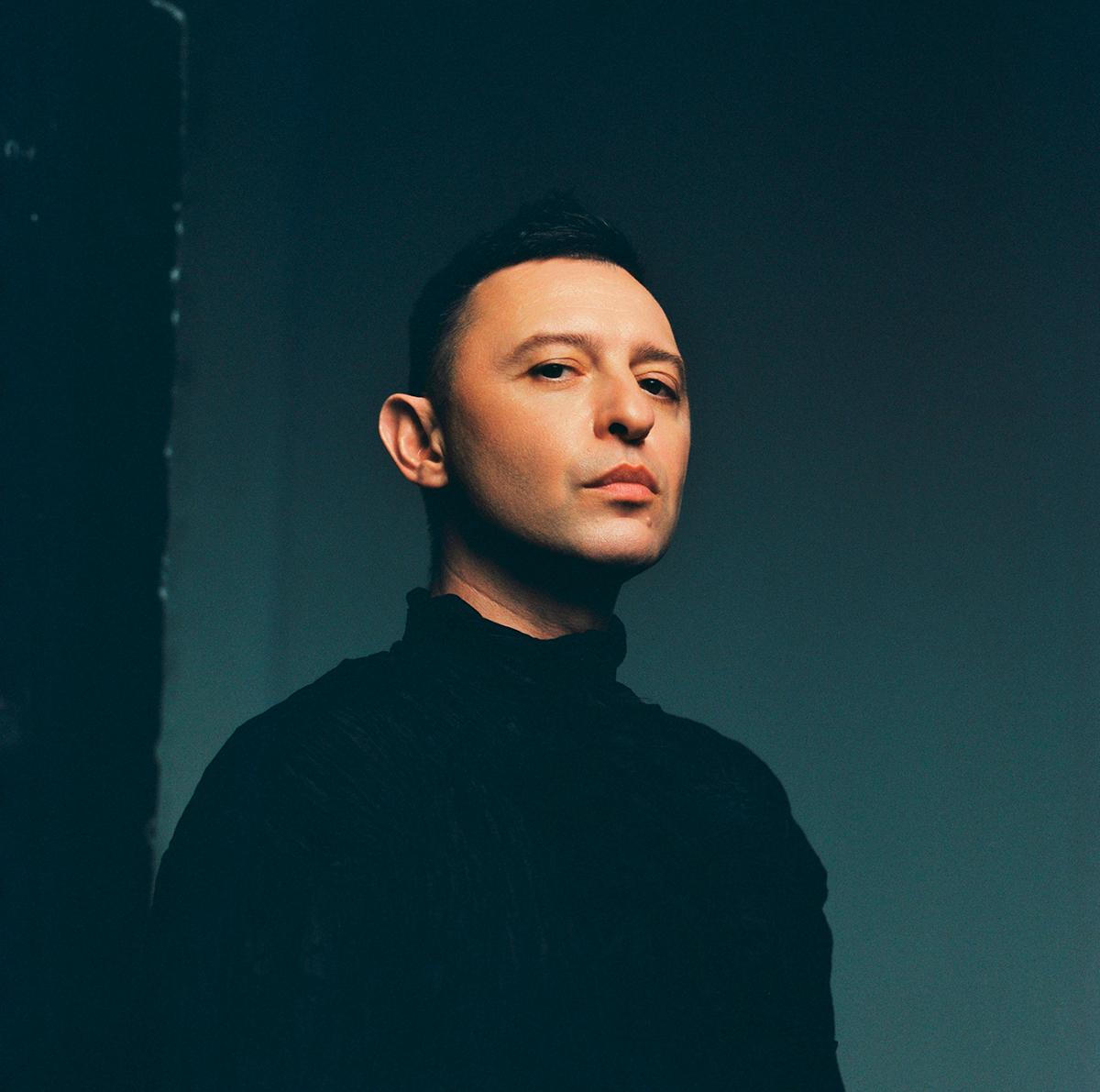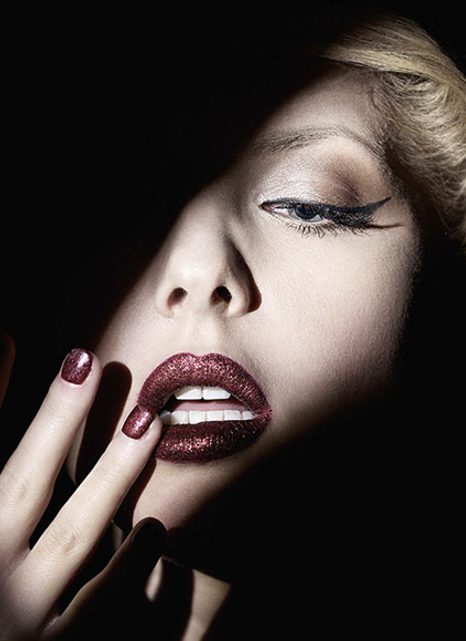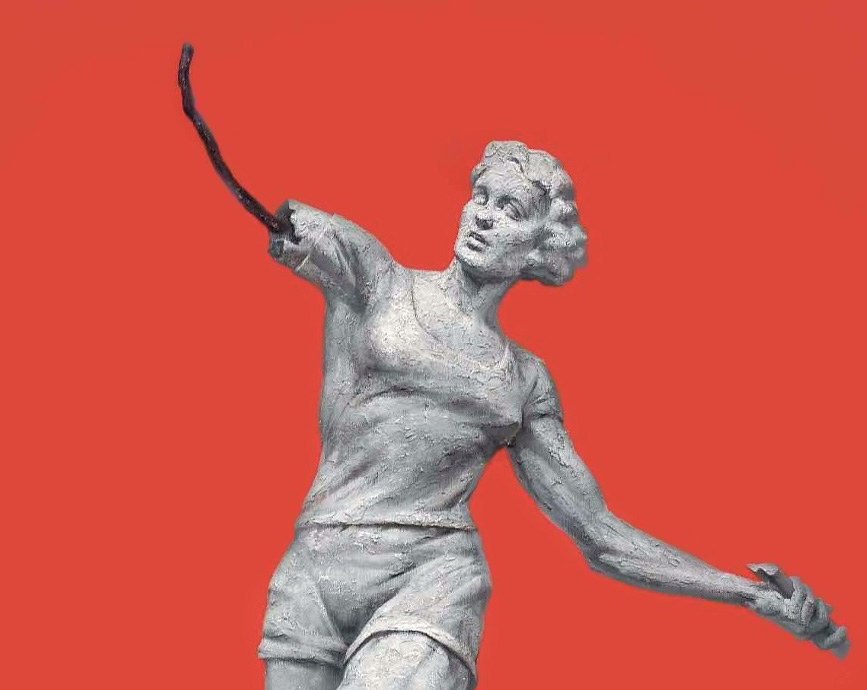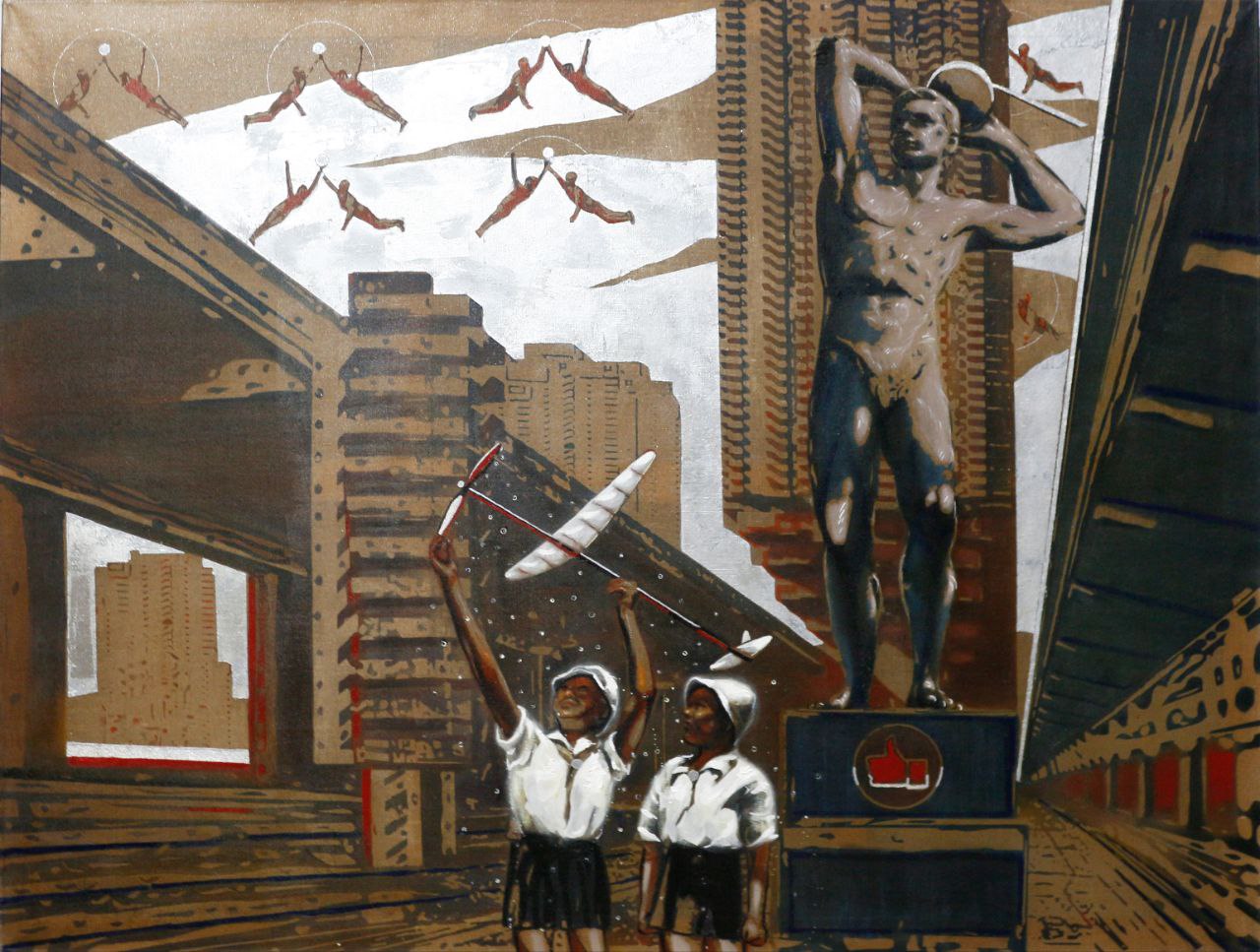Media Project (video installation, painting)
Erarta is proud to open its summer season with a unique media project by Veronika Rudyeva-Ryazantseva, entitled «Beehive». The project is particularly poignant reminder of the current circumstances facing the contemporary woman in popular culture, as well as raising important questions of vanity, beauty and aesthetic hierarchy.
A particular recurring theme which can be noted throughout the exhibition is that of the what is deemed to be a minor action of blow-drying one's hair. This image is usually presented to the viewer in a somewhat advertising manner, turning the art works into a contemporary commentary of this quotidian ritual. The title of the exhibition itself draws an interesting relationship between sound and action, with the sonancy of bees echoing that of the sonority of the hair-dryer.
The image and presence of women's hair has had a long-established history in art. Prior to the Renaissance, the female population was usually represented by the Virgin Mary, who was not painted in a realistic manner, save for the ever-powerful Church's accusations of heresy. Nonetheless, following a re-emergence of figuratively realistic drawing and painting in the 14th and 15th centuries, women were once more portrayed at their best, albeit in an austere and chaste manner. It was the emergence of impressionism and in particular the public exhibition of Manet's Olympia, which finally challenged the notion that the female nude should only be represented by a (commonly) reclining goddess, through substituting Venus, as seen throughout the paintings of Titian and Giorgione for what appeared to be a prostitute.
The stark difference between the lying women is the way in which the artists incorporated hair within their compositions. For the Venus of Urbino by Titian, Venus's hair flows naturally, and is allowed to cascade over her shoulders in an idealistic and dream-like manner. On the other hand the controlled updo in Manet's portrait, fixed with a flower suggest an ultimate command of one's destiny as a woman and hence her choice over what to do with her beauty and body. It is important to recognize what seems to be a very minor alteration within a composition for the significant event in Art History that it was.
This comprehension of the historical significance of hair is evident throughout Rudeva-Ryazantseva's exhibition. Here, women come alive at the influence of their hair, which although a part of their physical image, also attempt to dominate their being. Some of these beauties are turned into mutants, slaves to their regime of vanity. Here, their faces are hidden away from judgement and danger.
The video installation in particular, which is made up of 21 television screens captures this notion perfectly. These echo the final synthesis of the contradictory notion of hair's ability to liberate and yet imprison women, a modern twist of the way in which women are praised for their diligence in maintaining their physical appearance, whilst simultaneously castigating those who seem to have stepped over the line into vanity.

